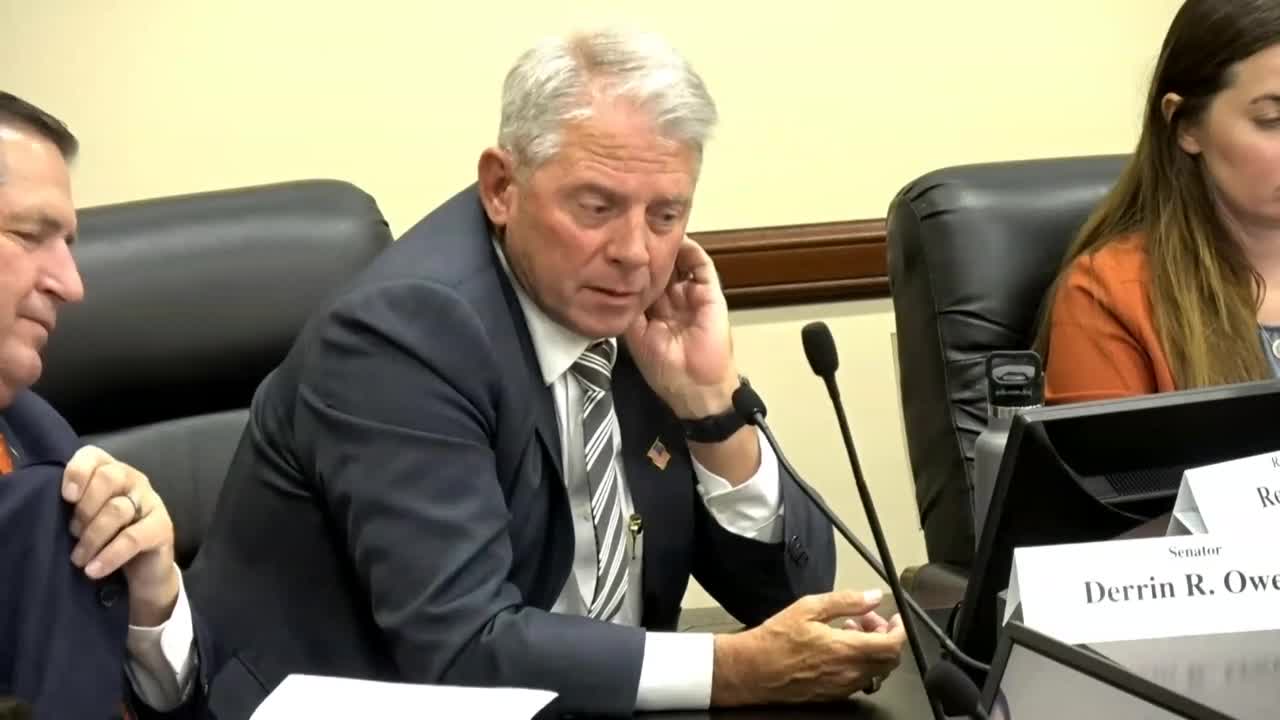Power Struggle Looms as Demand for Energy Soars
August 21, 2024 | Utah Interim, Utah Legislative Branch, Utah
This article was created by AI summarizing key points discussed. AI makes mistakes, so for full details and context, please refer to the video of the full meeting. Please report any errors so we can fix them. Report an error »

During a recent government meeting, discussions centered on the challenges and opportunities surrounding rooftop solar energy and the growing demand for electricity from data centers and artificial intelligence (AI) facilities in the state.
Concerns were raised by constituents regarding the annual \"zeroing out\" of stored energy for rooftop solar users, which occurs every February and March. A representative sought clarification on this process, prompting a response from the net metering expert. He explained that legislation passed a few years ago established a framework for evaluating rooftop solar reimbursement, which includes an annual reset of energy accounts. This ongoing discussion highlights the balance between the benefits for solar users and the burdens on those without solar systems.
The meeting also addressed the increasing interest in data centers and AI, which are expected to place significant demands on the state's power grid. The representative noted that while smaller power requests (up to 10 megawatts) can typically be accommodated through distribution upgrades, larger requests necessitate more complex transmission solutions. These larger loads, particularly those exceeding 25 megawatts, present engineering, regulatory, and economic challenges, as they require substantial infrastructure investment and longer timelines for development.
The conversation underscored the urgency for more generation resources to meet the rising demand. The total load in Utah is currently between 3.5 and 4 gigawatts, with requests from data centers alone amounting to approximately 8 gigawatts. The utility representatives emphasized the need for a balanced approach that accommodates both large-scale developments and the interests of existing customers.
Additionally, the meeting touched on the cancellation of a recent request for proposals (RFP) for renewable energy and storage, raising questions about the future of those projects and potential opportunities for large customers to connect directly with developers. However, concerns were expressed about the implications of direct access to energy markets, which could bypass traditional utility structures.
Overall, the discussions highlighted the critical need for investment in energy infrastructure to support both renewable and dispatchable energy sources, ensuring reliability while accommodating the evolving energy landscape. The representatives acknowledged the importance of collaboration with large energy consumers to develop solutions that benefit all stakeholders involved.
Concerns were raised by constituents regarding the annual \"zeroing out\" of stored energy for rooftop solar users, which occurs every February and March. A representative sought clarification on this process, prompting a response from the net metering expert. He explained that legislation passed a few years ago established a framework for evaluating rooftop solar reimbursement, which includes an annual reset of energy accounts. This ongoing discussion highlights the balance between the benefits for solar users and the burdens on those without solar systems.
The meeting also addressed the increasing interest in data centers and AI, which are expected to place significant demands on the state's power grid. The representative noted that while smaller power requests (up to 10 megawatts) can typically be accommodated through distribution upgrades, larger requests necessitate more complex transmission solutions. These larger loads, particularly those exceeding 25 megawatts, present engineering, regulatory, and economic challenges, as they require substantial infrastructure investment and longer timelines for development.
The conversation underscored the urgency for more generation resources to meet the rising demand. The total load in Utah is currently between 3.5 and 4 gigawatts, with requests from data centers alone amounting to approximately 8 gigawatts. The utility representatives emphasized the need for a balanced approach that accommodates both large-scale developments and the interests of existing customers.
Additionally, the meeting touched on the cancellation of a recent request for proposals (RFP) for renewable energy and storage, raising questions about the future of those projects and potential opportunities for large customers to connect directly with developers. However, concerns were expressed about the implications of direct access to energy markets, which could bypass traditional utility structures.
Overall, the discussions highlighted the critical need for investment in energy infrastructure to support both renewable and dispatchable energy sources, ensuring reliability while accommodating the evolving energy landscape. The representatives acknowledged the importance of collaboration with large energy consumers to develop solutions that benefit all stakeholders involved.
View full meeting
This article is based on a recent meeting—watch the full video and explore the complete transcript for deeper insights into the discussion.
View full meeting

